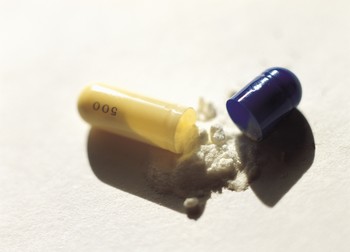 |
|
Universities and FDA collaborate to reduce cost of manufacturing - In the field: Pharmaceutical Science & Technology news
According to one principle investigator, Jackson A. Nickerson of WUSTL, price manipulation and regulation have been tried in the past to drive down the costs of manufacturing, but he believes there is a better way to solve the cost problem. "If the regulatory system could shift a little and if manufacturers changed the way they managed their plants a little, the overall cost-saving might be as high as 25%," he says. The research project, lead by Nickerson and Jeffrey T. Macher of GU, is a two-part investigation funded by the Olin School of Business at WUSTL, the McDonough School of Business at GU, and the National Bureau of Economic Research/Sloan Foundation. Basing their methodology on a research project that the pair participated in as doctoral students at the University of California, Berkeley, Nickerson and Macher will identify what factors lead to superior performance at manufacturing facilities. According to Nickerson, "The models we will develop have the potential to lower costs, increase profitability, increase the availability of drugs, and reduce the number of product recalls." In the manufacturer-related section of the research project, Macher and Nickerson will survey more than 200 product and biological manufacturing facilities about their manufacturing procedures. Using a secure Web site, each participant will answer questions about the company's regulatory interfaces, internal management, products, production, technological sophistication, and facility organization. The investigators will use the data to investigate whether certain factors play a role in a company's regulatory performance in terms of efficiency, product recalls, and product availability. Macher stresses, "Manufacturers are already producing high quality products, but we can improve the production and regulatory systems to make production times faster and resolve deviations more quickly." The pair is currently recruiting participants for the project, and Macher says they have received an overwhelmingly positive response from manufacturers. "Every facility we have approached has signed on to be a part of the project because they see value in having this kind of data. The findings will help them understand how they can organize themselves more efficiently," he said. Upon completion of the project, each participating plant will receive a scorecard of how they compare with other anonymous plants. They will also be given a road map that explains how they can get from where they are now in terms of manufacturing productivity to a more efficient system based on the team's statistical analysis. In addition to their study of manufacturers, the researchers will collaborate with FDA on a separate study that will target identified risks to pharmaceutical quality. FDA, GU, and WUSTL have established a material transfer agreement that allows Macher and Nickerson to analyze confidential FDA information and to conduct research that will help FDA identify factors that predict manufacturing performance. The goal for this area of the research is to further refine FDA's risk-based site selection model for inspections. Using data collected by FDA between 1990-1999, the researchers will examine both industry-and FDA-related factors such as the types and amounts of products that the plant produces, the size and age of the facility, and the FDA inspector's education, training, and experience. Macher and Nickerson will analyze this data to decide whether these factors predict regulatory outcomes such as product recalls, FDA inspection, and product availability. The findings will help FDA better manage its inspectorate. According to Nickerson, both phases of the project are slated for completion in August 2004 so that they can provide input to FDA while they are still within the window of opportunity established by the agency's "Pharmaceutical CGMPS for the 21st Century--A Risk-Based Approach" initiative. As part of this plan, FDA has the ability to revise its regulations and the researchers hope to take advantage of this flexibility. In addition to publishing academic papers about the research, Nickerson says they hope their findings will have an impact on the way FDA allocates its resources and organizes its investigations of manufacturing facilities. In conjunction with increasing efficiencies and enhancing the agency's high standards for safety, Macher says, "Our goal is to help FDA rearrange the way it assigns investigations based upon the characteristics of the facility." |
Copyright 2025 Fstradio.com All rights reserved.
|

 The top 16 U.S. pharmaceutical companies spend more than $90 billion on manufacturing each year, according to a Wall Street Journal article released 3 September 2003. This total--which includes materials, labor, operations, and depreciation of investments--accounts for more than 36% of the industry's overall expenditures, and is more than double the annual spending on research and development. A collaborative research effort between FDA, Georgetown University (GU, Washington, DC), and Washington University in St. Louis (WUSTL, St. Louis, MO) aims to tackle pharmaceutical manufacturing costs with a benchmarking study of manufacturers that will identify the most efficient, low-cost ways to organize pharmaceutical manufacturing.
The top 16 U.S. pharmaceutical companies spend more than $90 billion on manufacturing each year, according to a Wall Street Journal article released 3 September 2003. This total--which includes materials, labor, operations, and depreciation of investments--accounts for more than 36% of the industry's overall expenditures, and is more than double the annual spending on research and development. A collaborative research effort between FDA, Georgetown University (GU, Washington, DC), and Washington University in St. Louis (WUSTL, St. Louis, MO) aims to tackle pharmaceutical manufacturing costs with a benchmarking study of manufacturers that will identify the most efficient, low-cost ways to organize pharmaceutical manufacturing.